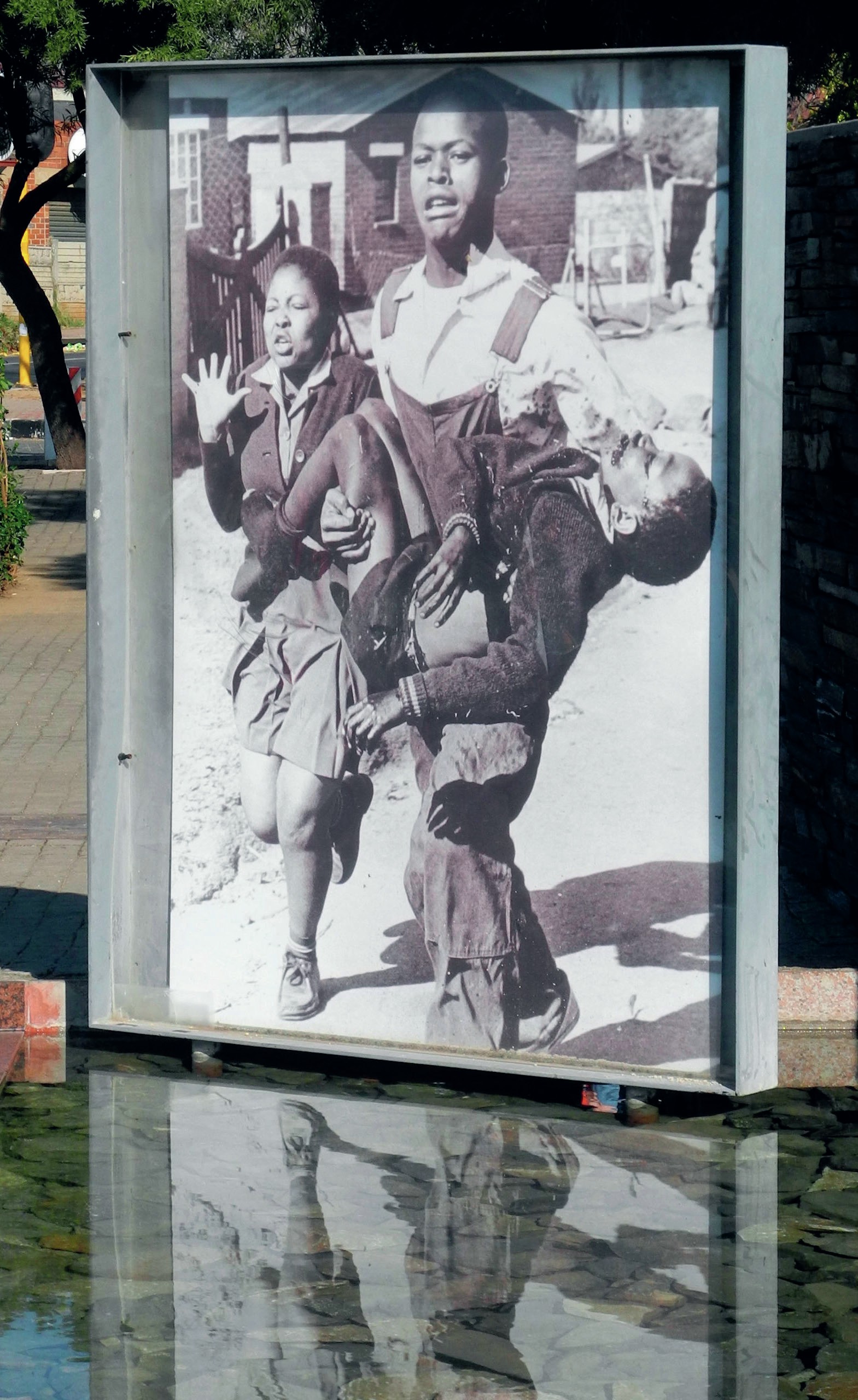
Any explanation of the end of apartheid in South Africa has to take as its starting point the 1976 student uprisings which engulfed the country. The uprisings started in Soweto, the country’s largest African township (racially segregated urban areas that were often underdeveloped), situated on the outskirts of the city of Johannesburg. On 16 June 1976, Soweto’s secondary school students took to the streets to protest against the South African government’s attempts to impose Afrikaans as a language of school instruction on African students. Afrikaans was not the first language of black students and was, moreover, closely associated with racial oppression and the ideology of apartheid.
What started as a peaceful march ended in carnage, as police opened fire with live ammunition on young, unarmed school children. The first known casualty of the protest was thirteen-year-old Hector Pieterson — the moment of his shooting is now immortalised in what has become an iconic photograph of South Africa’s liberation struggle. At least 25 children were killed on that day; the violence spread across the region and beyond. Within a matter of days, the student protests had become a fully-fledged uprising, directed not only at the inferior education to which black students had been subjected, but at the discriminatory system of apartheid itself.
Your organisation does not have access to this article.
Sign up today to give your students the edge they need to achieve their best grades with subject expertise
Subscribe




